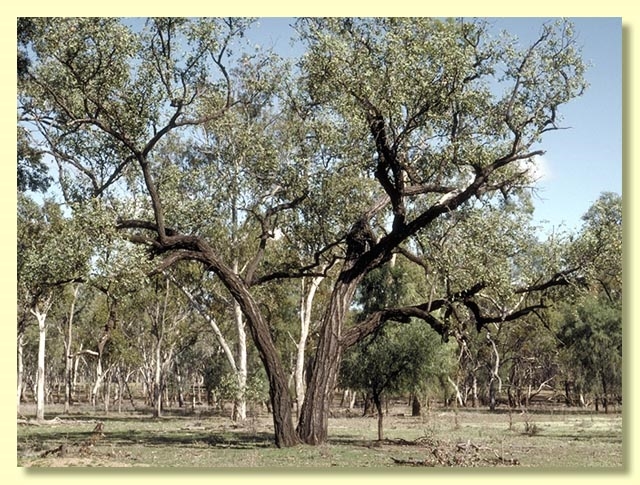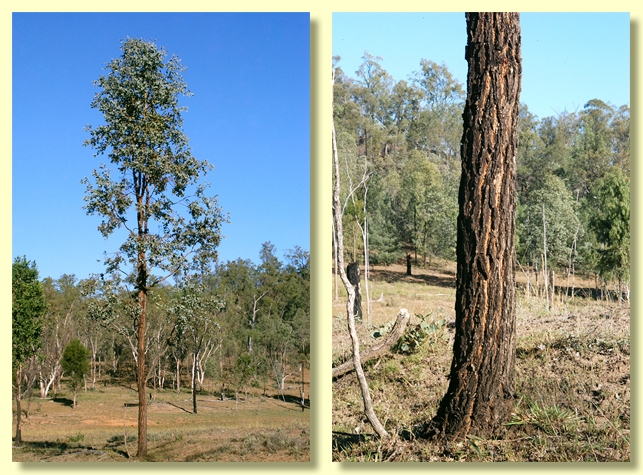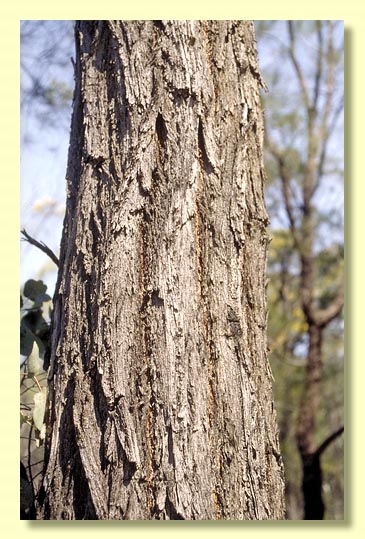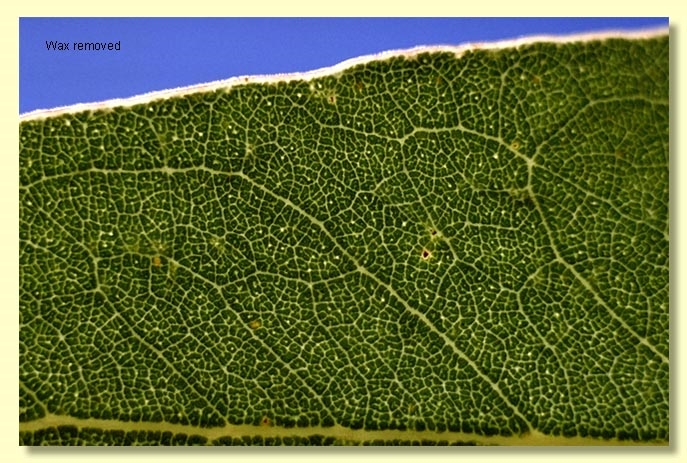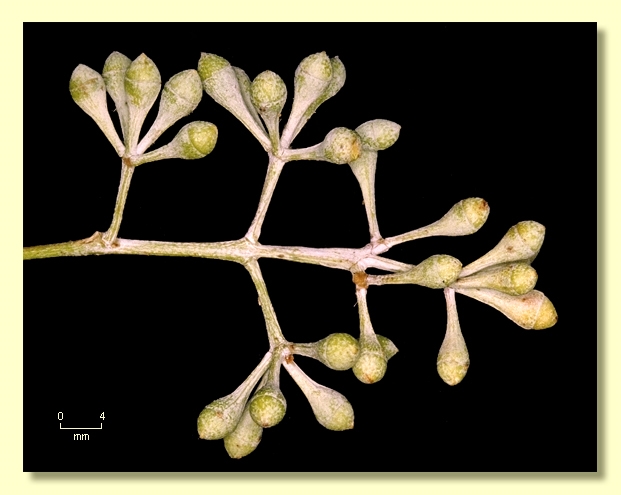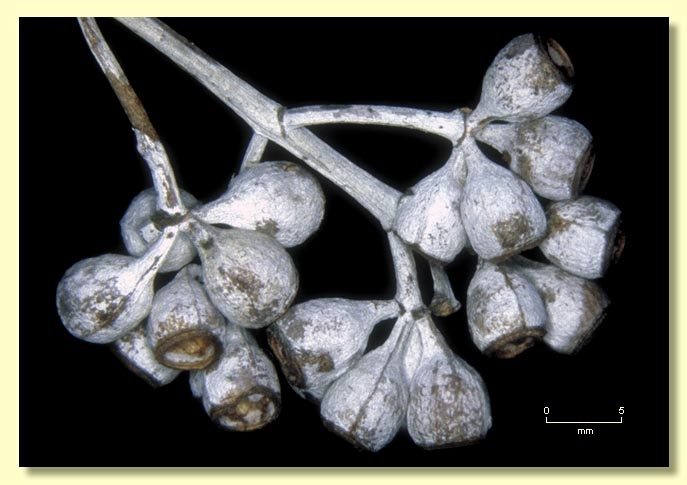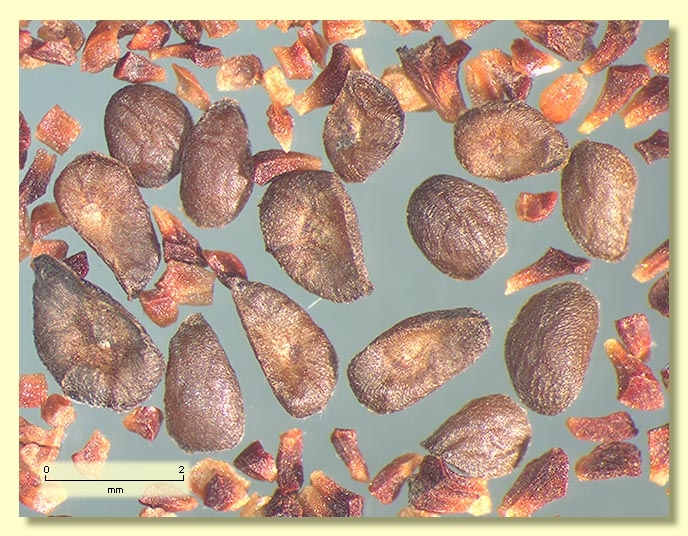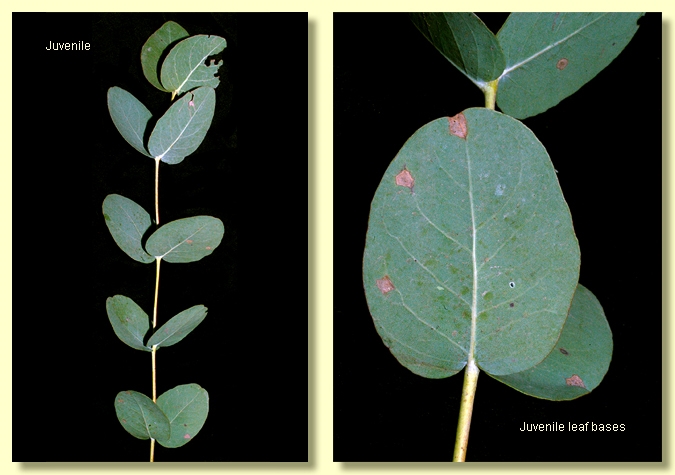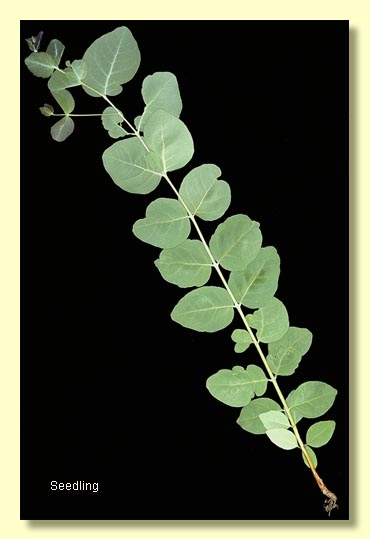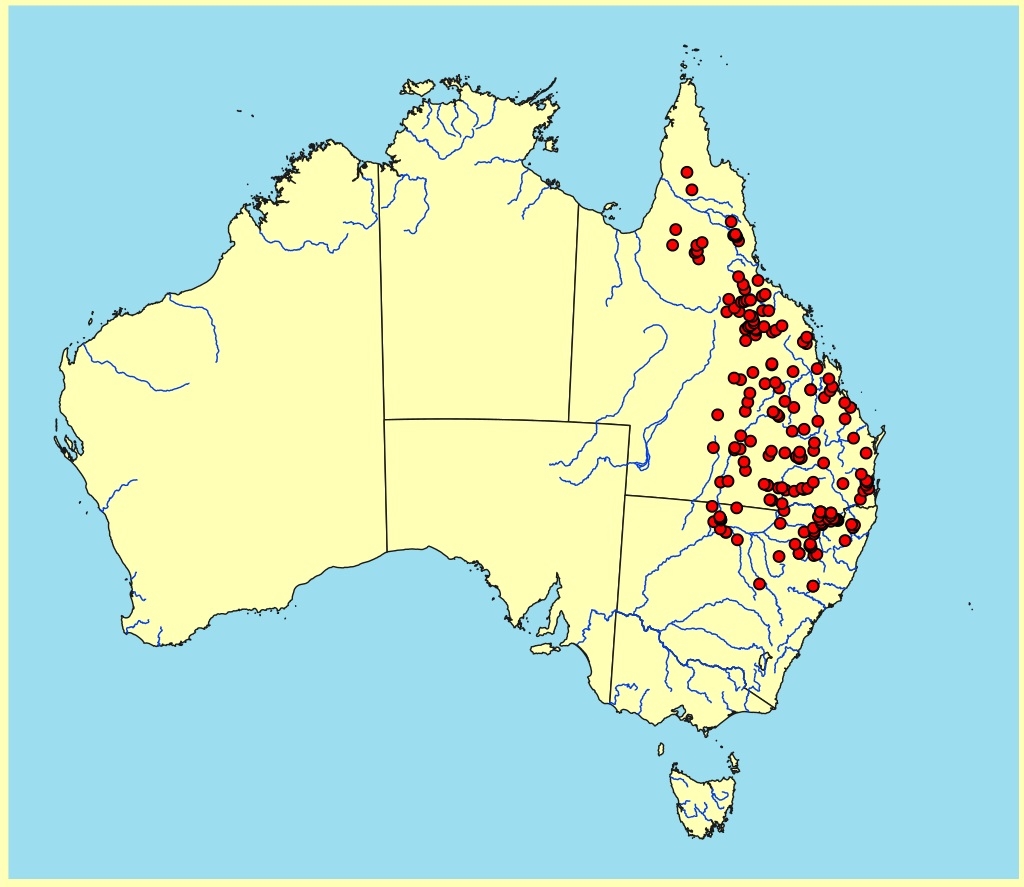Euclid - Online edition
Eucalyptus melanophloia subsp. melanophloia
Eucalyptus | Symphyomyrtus | Adnataria | Apicales | Siderophloiae | Jugatae
T: Queensland: Dawson River, F. Mueller s.n., undated [1856]; Lectotype (K, material on upper half of sheet) fide Bean, A.R., Telopea 12(4): 472-473 (2010).
Tree to 20 m tall. Forming a lignotuber
Ironbark to the smallest branches, dark grey or black, deeply furrowed longitudinally; branchlets usually glaucous.
Juvenile growth (coppice or field seedlings to 50 cm): stem rounded or square in cross section, usually glaucous; smooth, juvenile leaves opposite, sessile or very shortly petiolate, orbicular to ovate or cordate, 2–10 cm long, 1.3–10 cm wide, glaucous.
Crown usually of juvenile leaves, uncommonly forming lanceolate adult leaves. Crown leaves opposite, sessile, ovate to cordate or lanceolate, 3.5–9 cm long, 2–5 cm wide, usually flat, base lobed, concolorous, dull, margin entire, apex pointed or rounded, glaucous weathering to grey-green, side-veins greater than 45° to midrib, densely to very densely reticulate, intramarginal vein remote from margin and looped, oil glands intersectional or obscure.
Inflorescence terminal compound or sometimes compound in subterminal leaf axils, peduncles 0.5–1.5 cm long, buds 7 per umbel, pedicels 0.2–0.9 cm long. Mature buds diamond-shaped to ovoid, 0.5–0.6 cm long, 0.3–0.4 cm wide, glaucous, scar present, operculum conical, stamens irregularly flexed, anthers adnate, cuboid to globoid, dehiscing by broad lateral pores or slits, style long, stigma pin-head shaped, locules 3 or 4, the placentae each with 4 vertical ovule rows. Flowers white.
Fruit on pedicels to 0.9 cm long, rarely sessile, cup-shaped, truncate-globose or hemispherical, 0.3–0.7 cm long, 0.3–0.8 cm wide, glaucous or non-glaucous, disc descending, valves 3 or 4, near rim level or enclosed.
Seeds brown, 1–2 mm long, flattened-ovoid, dorsal surface shallowly reticulate, hilum ventral.
Cultivated seedlings (measured at ca node 10): cotyledons reniform; stems rounded or square in cross-section, glaucous; leaves opposite for many nodes, sessile or shortly petiolate, ovate to orbicular, 5–8 cm long, 2–6 cm wide, base amplexicaul to lobed or rounded, margin entire, apex rounded to broadly pointed, usually glaucous.
Flowering has been recorded in January, February, June, July, August and December.
A small to medium-sized ironbark tree or a mallee from the eastern half of Queensland to the western side of the Dividing Range in northern New South Wales, widely distributed from the Mareeba area in North Queensland south to near Bourke and Dubbo in northern New South Wales, with three disjunct populations, one in the Dajarra region south of Mt Isa and another west of Musgrave on Cape York Peninsula in North Queensland and a third from north-west of Alice Springs in the Northern Territory.
Eucalyptus melanophloia is one of two ironbark species that are very conspicuous in having a crown of glaucous, round to ovate, opposite, sessile leaves. The other, E. shirleyi, is endemic to northern Queensland and has larger leaves, buds and fruit. All other ironbark species have distinctly petiolate adult leaves and should not be confused with E. melanophloia. However the reader is directed to a study by Holman et al (2011), which suggests that there is a morphological cline most obvious in leaf shape but little genetic difference between E. melanophloia and E. whitei.
Eucalyptus melanophloia has two subspecies.
E. melanophloia subsp. melanophloia is the tree form of the species widespread and common east of a line from Musgrave to Adavale (Qld) to Bourke and Roto (NSW). Occurs on plains and low hills on clay loams and sandy loam soil but also found on gravelly sites in the east of its distribution.
E. melanophloia subsp. nana is consistently a mallee occurring sporadically on arid upland sites from Dajarra in Queensland westwards across the Northern Territory, where known from four localities north-west of Alice Springs, at Yaripilangu Range north-east of Newhaven Homestead, and at three sites east of the Lander River namely Ennugon Mountains on Ti-tree Station, Mount Leichhardt and Mount Denison.
In the classification of Brooker (2000) Eucalyptus melanophloia is placed in section Adnataria series Siderophloiae, a group of 22 ironbark species all with terminal inflorescences, buds with 2 opercula initially but losing the outer early in development leaving a scar, stamens all fertile, anthers adnate on the filaments, ovules in 4 vertical rows on the placentae, seeds flattened-ovoid. Two species in this group, E. melanophloia and E. shirleyi, are further separated from the rest as subseries Jugatae by their retaining opposite sessile glaucous juvenile leaves throughout the life of the plant.
Eucalyptus melanophloia: Greek melano-, black and phloios, bark.
subsp. nana: Latin meaning dwarf or small.

